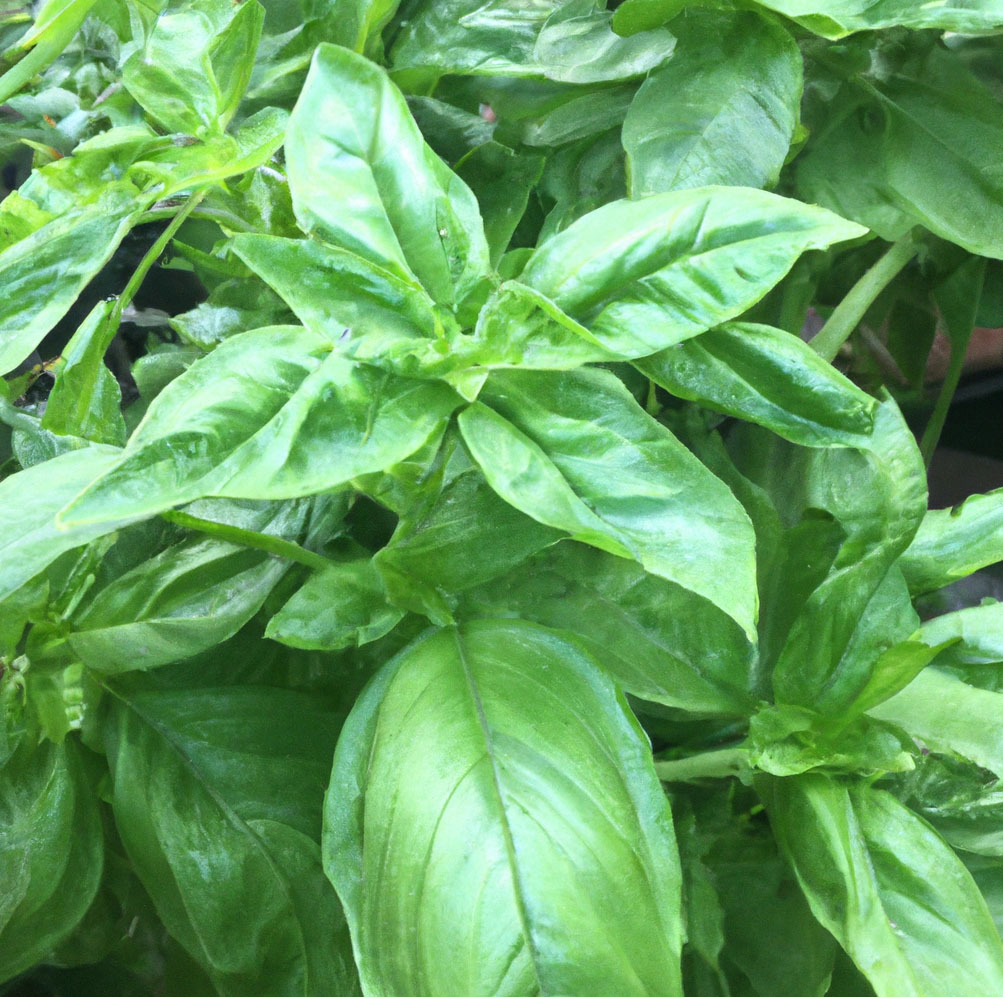Botanical Name: Ocimum basilicum
Sweet Basil, often called basil, is one of the most beloved and widely used herbs in global cuisine. Known for its aromatic, slightly sweet, and peppery flavor, this tender-leaf herb is a staple in Mediterranean, Southeast Asian, and Middle Eastern cooking. Its versatility, vibrant green leaves, and enticing aroma make it a favorite for novice and seasoned chefs.
It’s hard to forget my first authentic experience with Sweet Basil. I was a college freshman in Detroit and took my visiting family to the Roma Café in the Eastern Market. Bucking the family ordering trends, I asked for a plate of linguini with pesto. While this green plate of pasta put off my family, I ordered extra bread to soak up the lingering sauce.
Sweet Basil is the star of Italian cuisine. Outside of pesto, it’s a key ingredient in classic tomato-based dishes, such as marinara sauce, Caprese salad, and bruschetta, whose sweet aroma complements the acidity of tomatoes.
In Thai cuisine, Sweet Basil adds a subtle sweetness to curries, stir-fries, and soups, balancing chili’s heat and coconut milk’s creaminess. In Middle Eastern cooking it’s often incorporated into herbaceous salads like tabbouleh or used to garnish hummus and dips.
Sweet Basil is not limited to savory dishes. It pairs wonderfully with fruits like strawberries, peaches, and watermelon, adding an herbal twist to salads and desserts. It can be infused into syrups, cocktails, and even ice creams, where its sweet and aromatic notes shine.

